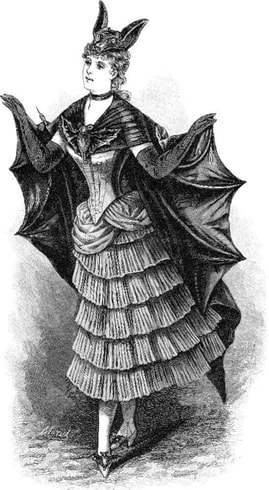 The Victorian era ushered in a new way to celebrate Halloween. Departing from previous decades of an All Saint’s Day that involved visiting the gravesites of loved ones that had passed and communing with the dead, Victorians subdued the holiday to fit in with a society concerned with morality, temperance, and quaint socializing. Halloween became a night of lavish partying with games that revolved around–of all things–romance. Periodicals in the 1870s and 1880s helped push Halloween as a night for frivolous divination games and socializing with friends. These publications were not unlike the ones we have today; they had articles on gossip, advice, and tips and tricks on relationships and keeping a home. Harper’s Weekly, Harper’s Bazaar, and Godey’s Lady’s Book were some of the most popular during this time. These magazines also published stories, poems, and many other short stories to entertain the Victorian middle-class. In just a few short years, Halloween parties were all the rage due to the influence of these magazines on middle-class families. Halloween parties were a staple for many young upper- and middle-class Victorians. By the 1890s, newspapers and other periodicals were printing ideas for games, recipes, and decorations to celebrate the holiday. Even invitations were extravagant; some hostesses would leave small jack-o’lanterns with invitations on the doorsteps of their party guests. Guests would dress in their best clothes and costumes as the parties also served as a matchmaking opportunity. Divination games played during Halloween mostly focused on love and match-making. One such game involved young women looking into mirrors, or scrying, to see the face of their future husband. Another game was to bob for apples and whomever was able to pick one up first, would be next to marry. Many other games included using different objects to find your spouse’s initials, what their silhouette looked like, their career, and even the colors of their alma mater college. While Victorians did still hold superstitions, many of the games were only played for fun and not taken seriously. By the 1910’s, Halloween began to fall out of fashion with adults. No longer were adults hosting these match-making parties as a growing industrial sector changed how many people worked and lived. The periodicals that once shared tips on how to celebrate Halloween turned to more intellectual topics of history and politics. Adults no longer found it suitable to play games and dress up. Halloween had officially turned into a children’s holiday. |
ArchivesCategories
All
|
 RSS Feed
RSS Feed